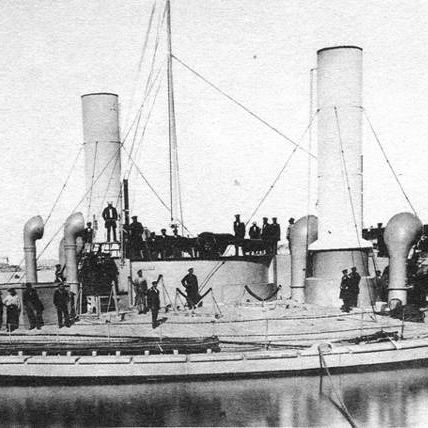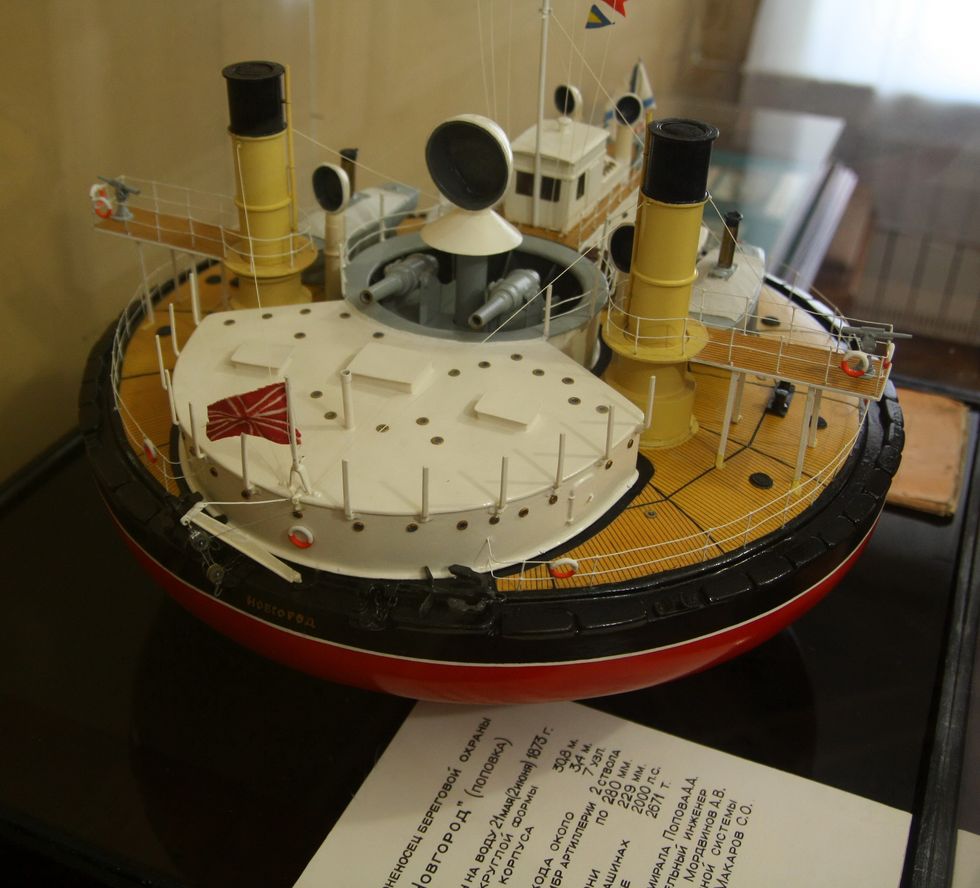- In 1873, the Russian Navy built a monitor with a round, plate-shaped hull.
- Novgorod carried a battery of two 11-inch guns, giving it potent firepower for its size.
- Although innovative, the ship's circular hull and other design issues meant that only two of its kind were ever built.
One of the most unusual warships of all time was the Russian Monitor Novogorod. With its circular hull, Novgorod was unusually large and heavy for its size, and its design enabled it to carry bigger guns than comparable ships of its size. The shortcomings of that design, however, limited its usefulness. So instead of taking the ship to the high seas, Imperial Russia ended up having it guard the coastline instead.
In the latter half of the 19th century, the steam revolution that resulted in railroads criss-crossing North America and Europe took to the sea. Steam-powered warships, known as monitors, dispensed with sails and instead began using coal-fired engines for propulsion. This freed warships from the tyranny of the wind, allowing ships to move across the seas even in dead calm.
Wind propulsion absolutely required the most efficient hull shape in order to squeeze as much speed out of a ship's sails as possible. The technological leap from wind to steam—which provided power to a set of one or more underwater screws on demand—prompted a look at alternative hull shapes. This proved to be a mistake, and Novgorod is a clear example why.
💡Did You Know?
The first battle between two monitors took place in 1862, between the Union Navy's ironclad Monitor and the Confederate Merrimack.
Novgorod was an experimental vessel designed to take advantage of the fact that a ship with a wide beam has increased buoyancy over a knife-shaped one. The ultimate wide-beam warship hull was a circular hull, so Imperial Russia's shipbuilders began building one in earnest.
Novgorod was perfectly round in shape, with a length of 101 feet and a beam of 101 feet. She displaced 2,500 long tons, a lot of stuff for a warship just 101 feet "long," while maintaining a draft of just 13.5 feet. By comparison, an Independence-class littoral combat ship serving with the U.S. Navy is 418 feet long with a beam of 104 feet and displaces 3,100 tons.
Russia's round ironclad was well-armed for her day, carrying two 11-inch rifled muzzle-loading guns. Other Russian monitors, such as the Admiral Lazarev class, carried just a pair of small nine-inch guns.
The circular hull experiment was ultimately deemed a failure. The shape of the hull made it inefficient at sea, resulting in a measly top speed of 6.5 knots. The warship also turned very slowly, leaving it unable to engage moving targets for sustained periods. In the end, Novgorod and her successor, Vitse-admiral Popov, were regulated to coastal defense duties, helping protect Russia's 24,000-mile coastline from attack.
🎥Now Watch This:

Kyle Mizokami is a writer on defense and security issues and has been at Popular Mechanics since 2015. If it involves explosions or projectiles, he's generally in favor of it. Kyle’s articles have appeared at The Daily Beast, U.S. Naval Institute News, The Diplomat, Foreign Policy, Combat Aircraft Monthly, VICE News, and others. He lives in San Francisco.














